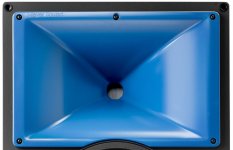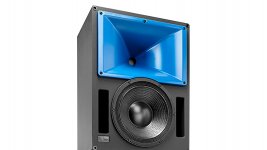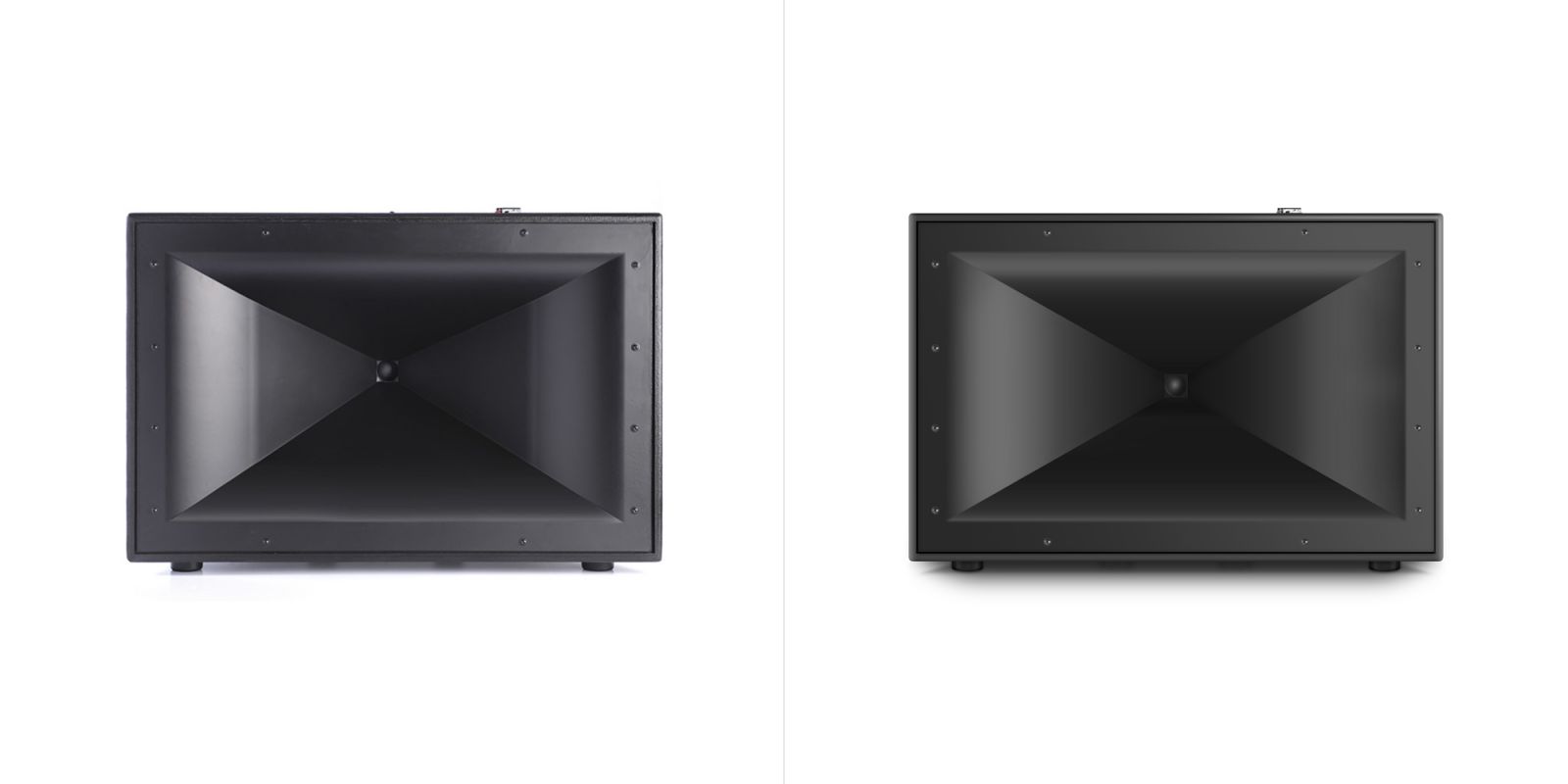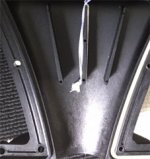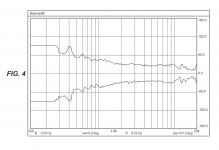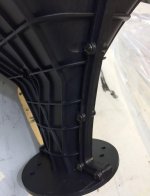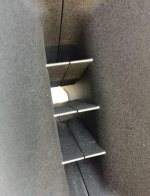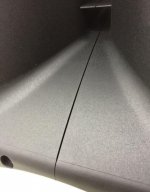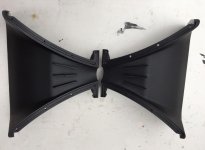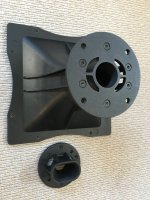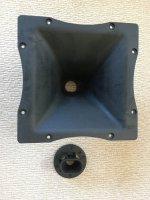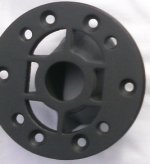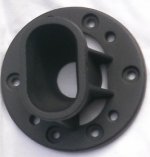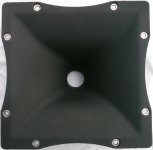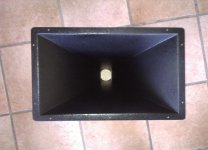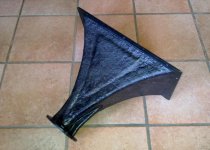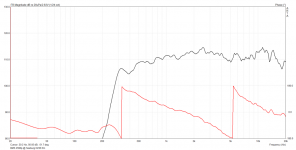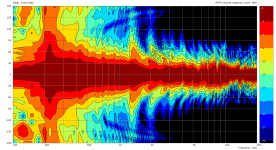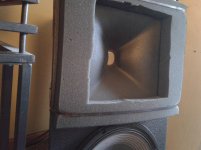Simply put: if you want wider coverage (at least on plane) than roughly 60°, for a given throat size, horn length and shape, you'll need some sort of pinching/narrowing in the horn path in order to 'shape' the wavefront (and avoid beaming).
Last edited:
Some may argue, "what about this?"
A (blue) horn and no pinching to speak of.
A (blue) horn and no pinching to speak of.
Attachments
Last edited:
Simply put: if you want wider coverage (at least on plane)
Should be: "at least in one plane"
I wonder wether the smoother oval diffraction slot of the 18s has less disadvantages then the ones on horns like all those RCF HF9... or the JBL flat-front biradials.
And I also wonder what the radiation of the Meyer one looks like.
Regards
Charles
And I also wonder what the radiation of the Meyer one looks like.
Regards
Charles
Last edited:
Last edited:
And I also wonder what the radiation of the Meyer one looks like.
Regards
Charles
Approximately like this:
Attachments
Last edited:
The Meyer is quite nice !
The throats of the 2" BMS horns do also look like the one on the Klipsch, i.e. quite simple actually.
While it shouldn't be that difficult to calculate throats with smooth transistions I guess it is quite difficult to make a mould/template for such a throat. Maybe practical waveguides for which the models/templates are made by the stretching of foil and or fabric are not that bad either.
Regards
Charles
Regards
Charles
The throats of the 2" BMS horns do also look like the one on the Klipsch, i.e. quite simple actually.
While it shouldn't be that difficult to calculate throats with smooth transistions I guess it is quite difficult to make a mould/template for such a throat. Maybe practical waveguides for which the models/templates are made by the stretching of foil and or fabric are not that bad either.
Regards
Charles
Regards
Charles
Inside RCF HF940 throat (ignore the rope)))
The HF950 is probably one of the best best horns on the market.
It's a shame RCF didn't deem it necessary to improve the quality of fit and finish.
The smaller RCF horns, cast/molded in one piece, are much better.
Attachments
Last edited:
For comparison, HF 94 and HF 64 (last 2 images) including throat adapters:
Attachments
The Meyer is quite nice !
Regards
Charles
The Meyer polars include dsp.
A German guy measured a BMS 4590P mounted to an old Seeburg Acoustic Line 60x40 horn.
Attachments
If you compare the throat of the Seeburg horn to the Meyer X-10 horn and even to the K402, you'll notice some (subtle) similarities.
In my opinion, the K402 is also a diffraction horn, but not in the classical sense.
In my opinion, the K402 is also a diffraction horn, but not in the classical sense.
Last edited:
This bubble in this throat.
Attachments
Last edited:
Ah OK !
I quess this waveguide does still behave better than an old 2344 for instance. Or am I wrong ?
My gut feeling tells me that sharper shapes used for diffraction work better up to higher frequencies in achieving wide dispersion but smoother ones have less unwanted side effects (like uneven frequency resonse and horn honk).
Regards
Charles
I quess this waveguide does still behave better than an old 2344 for instance. Or am I wrong ?
My gut feeling tells me that sharper shapes used for diffraction work better up to higher frequencies in achieving wide dispersion but smoother ones have less unwanted side effects (like uneven frequency resonse and horn honk).
Regards
Charles
Last edited:
The HF950 is probably one of the best best horns on the market.
It's a shame RCF didn't deem it necessary to improve the quality of fit and finish.
The smaller RCF horns, cast/molded in one piece, are much better.
Is it ok to paint it to make it look more presentable?
- Home
- Loudspeakers
- Multi-Way
- Is it possible to cover the whole spectrum, high SPL, low distortion with a 2-way?
